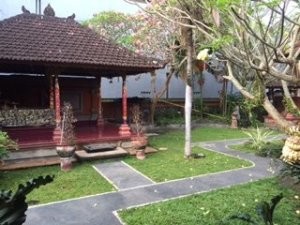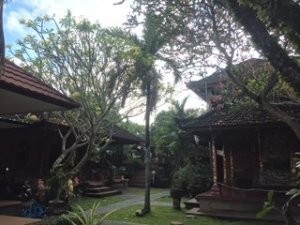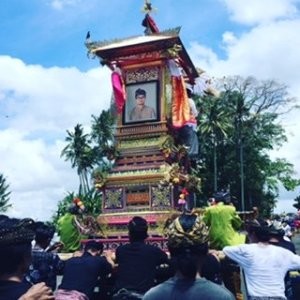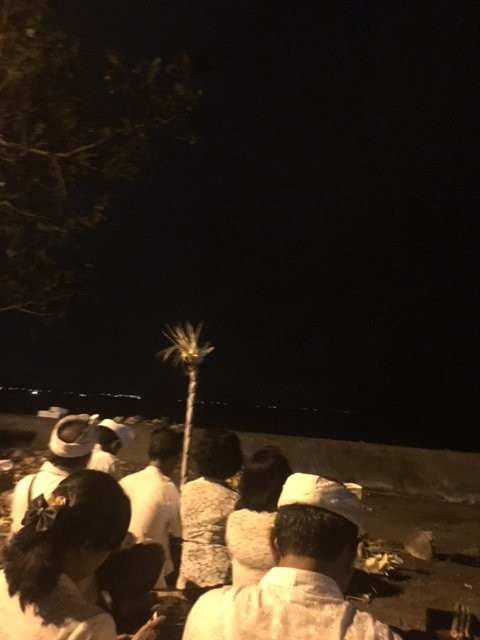Indonesian Archipelago Series-10: Die as a Balinese Hindu
Unlike my previous posts that mostly about places to go in a city, today I would like to talk about how a funeral is done in my homeland, Bali. Although I grew up in Surabaya (capital city of Java), my parents and great parents are originally from Bali. The majority is Hindu. Hindu believes in Panca Sraddha which are five points of main beliefs: Brahman that means God, Atma that means the spark of God’s soul is inside each of us, Karmapala which means we believe in karma law, Punarbhawa which means we believe in reincarnation cycle and the last is Moksa, a belief that eventually our atma will reunited with Brahman. This moksa is believed as the purpose of our being and the highest form of happiness that can be obtained.
We call our cremation ceremony as Ngaben. As I mentioned in my previous post about Hindu Tengger in Mt. Bromo, Hindu believes that we have to do the sincerest offering called Yadnya. Ngaben is the part of Pitra yadnya, which is addressed to our parents or ancestors. They have kind of little clusters in the village or the cities called Banjar to manage all the religious ceremony in the area they are being a member. The main task of the members are to prepare if there is big ceremony of holy days by making the flower arrangement called canang, and also the offerings which consists of food, drinks and mostly fruit. In the big day, they walk to the spots where they have to put the offerings mostly in their family temple inside their house, the streets and all the way to the Pura desa (Temple of the village) or bigger temple in the city center or capital. Therefore, when there is someone passed away, it is the big responsibility of the whole Banjar to help the family preparing Ngaben and take care of them.
The aim of Ngaben is to cut the cord between the atma (soul) and the worldy life he has experienced on earth, therefore, he can reach Moksa sooner. For the family itself, it kind of help them to become easier to let go of their loved ones. This is indeed a bit hard core, but based on my experience it kind of worked. Normallly, Ngaben will wait until we have so called good day based on Hindu calendar. While waiting for that day, the body will be placed in the part of Balinese house pavilion. Here in Bali, a traditional house can consists several families living together in separated cottages united as a house. The center of this cottages are the kitchen and the family temple. This home pavilion also acts as when a baby is having ceremony, potong gigi ceremony when the kids reached puberty, the marriage ceremony and finally your own funeral. This pavilion is like the witness of your life and death. During the wait, people will visit the house since the morning until late night. Therefore, the Banjar members and the family members mostly take turn not to sleep until the morning. This period is the most exhausting part of the whole process. For some families it can take almost two weeks before the Ngaben day. When you visit the house, it is either you wear dark colored cloth or simply white kebaya. Kebaya is our traditional cloth that is used for all religious ceremonies. Some village believe you have to bring something for the family for example basic needs like rice, sugar or coffee. These are how my house looks like in Bali:


Ngulapin
To be honest, I do not really understand the whole detail of the ceremony lead by a Pedande (Hindu religious leaders). Based on my experience in the death of my grand mothers and my ex boyfriend, before the main ceremony they will start with calling back the spirit of the death one to enter a medium human. Here, the spirit will be asked where are they now, what do they want to say, is there anything specific that he or she want the family to finish and how he would like his Ngaben ceremony will be. This is a tricky day because I heard that some people that provide this service sometimes lied and pretended that he or she is having the dead spirit inside. However, I also heard some true story like for example they really walk, eat, remembers everything that no one else will know. In the case of my grandmother it kind of worked, she said she has arrived and welcomed by Balinese dancers somewhere in other world. In my boyfriend case, it seemed a bit fake because he called his father’s name with other nickname which was so weird. This Is done again differently in different region and local belief.
Nyiramin
This is the bathing and cleaning the body which is done in the house yard just beside the pavilion. This is the most excruciating moment in your life when you see people that were daily talking to you with open eyes were already so stiffed with no color at all. For my grandmother’s case, they insisted us to really touch her, comb her hair, cut her nails and everything. After, they will be covered with the praying clothes (white). In this part, you are not allowed to cry and I honestly do not know why. Of course, it is not possible not to cry. In my boyfriend case, I was about to faint and I felt like my knees are missing from my feet. I was about 10m far from the spot at that time. During the nyiramin process, the ceremony leader will also cite some prayers and the whole family will say “letting go” things. Not only covering the body will be covered by praying clothes, we also put flower on some parts like the nose, the part between eyes, eyebrows and other parts.
Then, the process will be fully about the prayers to guide the spirit and to really cut it from the earthly bond. When the leader is done with this prayer he will shout "Pegat!" which means it is finally cut or ended and the audiences have to answer also with Pegat to confirm. After that, the coffin will be put inside an arrangement of procession which is about 2-3 meters high. This arrangement will be carried by the men and boys of the Banjar until the cremation place will take place. Imagine, from day 1 until today can take about a month and the family is really exhausted mentally and physically. Still, we have to walk under the sun to go to the cremation center of the village. This walk also has some rules like how many times you turn around the coffin in which part of the house or street to attain the purpose of the walk. Depending on the economical and social status of the family, the shape of the coffin will be different. For instance, one descent of Balinese elite can be cremated inside a giant black cow shaped coffin. This is the one for my (ex)boyfriend:

Ngeseng
This is where the body is cremated. Before being cremated, the Pedande will give the body with Tirta Pangentas or the holy water. All the process will be accompanied by the Puja Mantra prayers. Then the cremating started in the open air. It will take 2-3 hours and there are different beliefs either you have to see them until the end or you can not see them. In my boyfriend case, we have to see him burning until the end. The fire is so big, I have never seen such a big flame in my life. After all the bodies turned into ashes, it seems that the bones part will never turn into smaller pieces. This bone pieces have to be collected by the closed ones in a coconut shell to be then grinded and being put in the jar to be then washed away in the sea.
Nganyud
Nganyud means wash away. After collecting the remaining ashes and bones, we went to the beach to put the ash jug. In case of my grandmother, it was a beach just 10 minutes walk from her house. It was a calm afternoon after the long process. In case of my boyfriend, it was already dark when we reached the ocean. His father and his brother carried the jug and take a little boat rent by the locals to go a little bit to the middle of the sea and put the jug there. However, the wave was crazily high and I was really afraid of them going into the dark and the waves. It was done at least and we really lost all of our energy until the point you do not have any energy left even to feel anything. Some weeks after all this procession there is a last procession which I forgot the name that acts as the closure of everything.

In summary, this whole long process can take weeks, months even years to be finished depends on the agreement of the family, economy conditions and every other possible factors. As I mentioned, in Indonesia especially in Balinese little villages, it is really important for you to get involved in local religious activities because everything that happens in your life since birth until your cremation are helped by the people around you. Well, I can not imagine in the future when the youngsters like me who has already moved outside Bali will have. Otherwise, I am just gonna have a simple cremation without involving the whole village just to voluntarily sweat themselves for me, and for my family not to spend bunch of money just to cremate me, you know. However, I have to admit that having this cultural and belief ceremonies make you feel like you are a part of something. The whole processes really drained the whole energy and tears you might never know you had, but at the end, I feel like it really helps me to be easier to let them go simply because I have no other power to be sad anymore. As time goes by, you can learn to properly let them go, being thankful for all the time that you have shared together and all their good deed in your life, apologize for all your mistakes to them, spend the best of time with the remaining living ones, and keeps on turning with the rest of the world: waiting your turn to come.
Photo gallery
Want to have your own Erasmus blog?
If you are experiencing living abroad, you're an avid traveller or want to promote the city where you live... create your own blog and share your adventures!
I want to create my Erasmus blog! →



















Comments (0 comments)